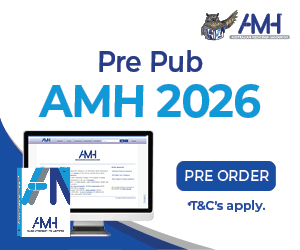Voluntary assisted dying, now legal in all Australian states, is growing in acceptance as a legitimate end-of-life care option, according to a new national report.
Advocacy group Go Gentle Australia’s National Voluntary Assisted Dying Survey 2023 asked people involved in VAD, including those with terminal illnesses and their families, clinicians, and policy experts, what was working well and what could be improved.
On the whole, VAD services are working well in Australia, the report found. This includes health professionals feeling empowered to choose to participate – or not – in VAD service delivery, and adequate protections to prevent people from being coerced into VAD.
Identifying room for improvement, the report found “there was a strong appetite” to allow earlier access to VAD, where currently in most Australian jurisdictions you must have less than six months to live before you can start the applications process (or less than 12 months if you have a neurological condition). The view was particularly strong for conditions involving cognitive degeneration, such as dementia.
While respondents with first-hand experience of VAD care said their experiences had mostly been positive, many called for more open discussion about VAD – including opportunities for healthcare practitioners to initiate discussions, which is currently prohibited in Victoria and South Australia. They also want easier access to information, support and advice on how to navigate the process.
Significantly, attracting and retaining workforce emerged as a major concern for many stakeholder groups across all states. Those already working in VAD indicated they had the knowledge and skills to deliver good care, but they valued ongoing support, calling for better access to mentoring and supervision. Heavy workloads and lack of adequate remuneration for the work required to support people through the VAD process were other barriers reported.
Key insights
- 91.3% of respondents ‘agreed’ or ‘strongly agreed’ that VAD should be a legal end-of-life care option
- 1 in 5 VAD applicants listed ‘access to trained and authorised medical practitioners’ as a main challenge
- 82% of VAD practitioners agreed that ‘eligible people are generally satisfied with the care they receive’
- 80% of non-VAD practitioners said they would consider doing VAD training in the future
The survey examined the strengths and challenges of VAD programs, barriers to access, VAD training and resources, and workforce capability and capacity.
More than 200 responses were received from health practitioners involved in Vad services, including nurses working within statewide support services as care navigators.
Practitioners involved in VAD delivery were passionate about facilitating high-quality care and a dignified death for their terminally ill patients and reported feeling adequately protected by their state’s legislative settings. Yet heavy workloads, inadequate remuneration and burnout were identified as genuine concerns. While a significant number questioned whether their workplace had the capability and capacity mix needed to provide high-quality VAD care.
“VAD is the most highly regulated practice I have experience,” one respondent said, when asked how the system could be improved across the country.
“The VAD process is horribly bureaucratic in Victoria. I positively hate but persevere because of my strong support for VAD,” said another.
The National VAD Survey will be conducted annual to track experiences with VAD with the aim of providing a cross-jurisdictional comparison of services and highlighting areas for improvement moving forward.
“As the only organisation with a national focus on end-of-life choice, Go Gentle Australia’s aim is to ensure end-of-life processes and systems in all jurisdictions deliver high-quality care, and protect choice,” CEO Dr Linda Swan states in the report.
“This first national survey gives us a wealth of information about how VAD services are operating across the nation. It gives us a strong foundation to continue to explore experiences and expectations of VAD, with a focus on understanding how its operation differs between states and identifying areas for improvement.”
Read the full report here








